
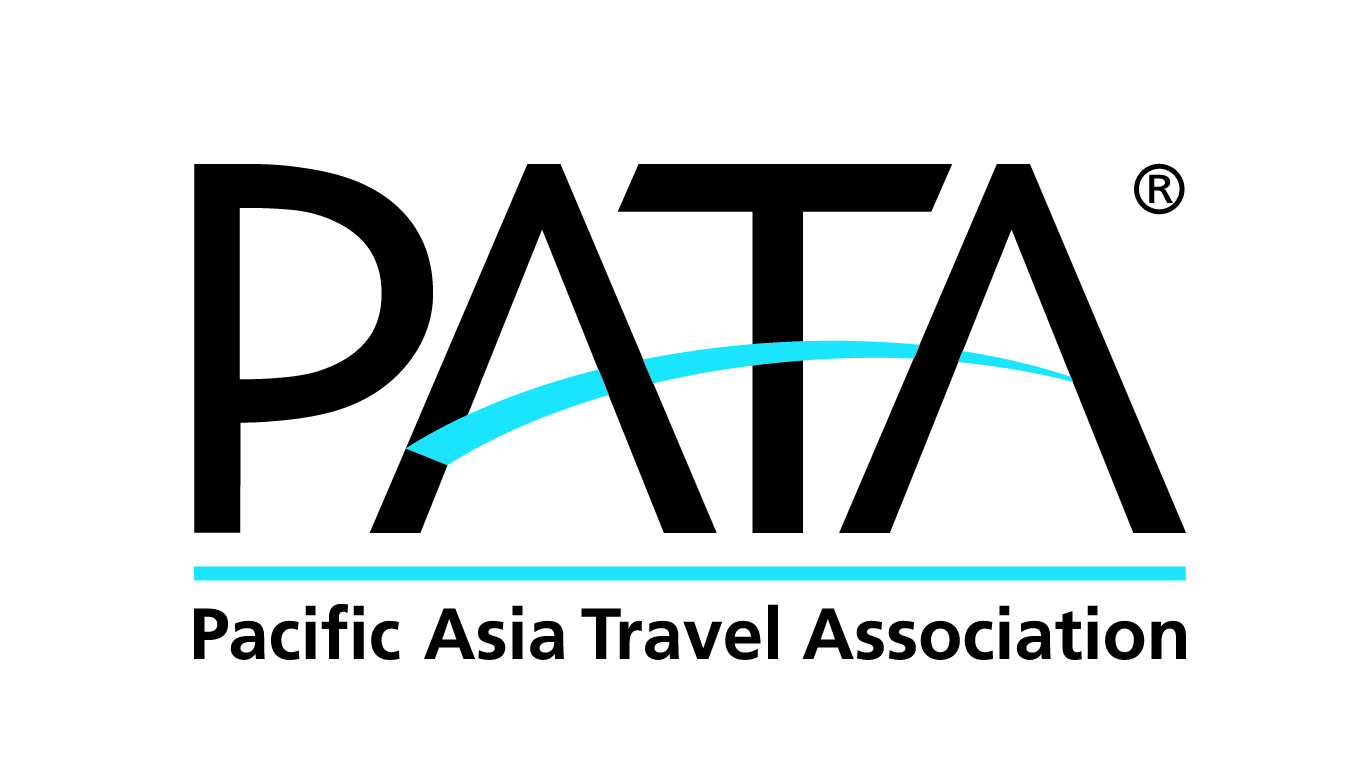
PATA Face of the Future 2018: Call for Entries
BANGKOK, January 30, 2018 — The Pacific Asia Travel Association (PATA) is now accepting submissions for PATA Face of the Future 2018. The winner will receive complimentary round-trip economy class air ticket and accommodation to attend the Association’s Dinner and Awards Presentation during the PATA Annual Summit 2018 on May 18-21 in Gangneung, Korea (ROK). Deadline for submissions is March 9, 2018.
The winner will also be provided a speaking opportunity at the PATA Youth Symposium and the one-day conference during the PATA Annual Summit 2018 and will be invited to join the PATA Executive Board as a non-voting member and observer.
Other benefits include:
Recognition as the PATA Face of the Future 2018 including the use of a corresponding brand identity logo
Mentorship opportunity with PATA CEO Dr. Mario Hardy
Opportunities to speak at other PATA events or partner events on behalf of PATA
Global media exposure via PATA’s far-reaching communication channels
Opportunity to participate in PATA Committee meetings as an ‘Observer’. Join international discussions and grow your professional network in various sectors including Aviation/Carrier, Government/Destination, Hospitality, HCD, Industry Council and Sustainability
Build your profile as a mentor for the PATA Young Tourism Professional (YTP) Mentorship Programme to develop young tourism professional students in the region
Complimentary registration to one PATAcademy-HCD training of your choice (June or December 2018)
One blog post about your passion and journey to success
PATA is a non-profit membership association dedicated to human capital development (HCD) across the broad spectrum of the travel and tourism industry. The primary focus of the Association’s HCD programme for 2018 is upon the development of the ‘Young Tourism Professional’ (YTP).
To highlight PATA’s commitment to HCD, the Association annually presents a special award and prize to an exceptional ‘rising star’ in the industry. All recipients of this prestigious award have exhibited initiative and leadership in the advancement of tourism as well as demonstrating commitment to the sustainable development of the Asia Pacific travel industry in line with PATA’s mission.
“I feel so honoured and humbled to have been recognised with the prestigious PATA Face of the Future 2017 award. This award is a recognition for my amazing team at Tripfez and Salam Standard who have put in tremendous effort in promoting the concept of inclusive travel focusing on localisation of our travel products for Muslim travellers,” said Faeez Fadhlillah, CEO and co-founder of Tripfez, Malaysia and PATA Face of the Future 2017. “Being recognised as the PATA Face of the Future opens up a whole new opportunity to connect with national tourism organisations, associations, hotels, and travel stakeholders to promote Muslim travel as an integral part of the hospitality industry and move towards culturally localised travel experiences.”
“The PATA Face of The Future recipient also has the opportunity to join the PATA Executive Board and be part of the dynamic team in deciding the future of the industry and association at large and be able to experience and see first-hand its operations. I think for young travel professionals, it opens a whole new world, not just in networking, but also in understanding first-hand how the travel industry works and to witness how important policies are made. It’s a great learning experience,” he added.
Dr Helena Lo, Director of Pousada de Mong-Há – the Educational Hotel of Institute for Tourism Studies (IFT), Macau SAR and PATA Face of the Future 2015 said, “It was truly an honour being PATA Face of the Future and being invited to join the prestigious PATA Executive Board for a one year term. I had the chance to join different PATA events during my term, which was a great opportunity to meet remarkable tourism leaders from various PATA destinations. I also met many other outstanding young tourism professionals, whom inspired me to continually think and better myself in order to keep pace with my counterparts. I also benefited from global media exposure via PATA’s far-reaching communication channels. If you would like to be the next PATA Face of the Future and be found on different search engines, ACT NOW!”
ELIGIBILITY
An individual is eligible to enter the 2018 PATA ‘Face of the Future’ Award if he or she is:
Aged 18-35 as of May 21, 2018
Working for a PATA member organisation in good-standing as of May 21, 2018
JUDGING CRITERIA
The judges will seek to identify an individual who has best:
Exhibited initiative and leadership in the implementation of local, regional and/or international tourism initiatives (including research projects)
Demonstrated commitment to the sustainable development of the Asia Pacific travel industry in a spirit compatible with PATA’s mission
JUDGING COMMITTEE
Faeez Fadhillah – PATA Face of the Future 2017 | CEO, Tripfez
Sarah Mathews – Chairperson, PATA | Head of Destination Marketing APAC, TripAdvisor
Dr. Mario Hardy – CEO, PATA
Parita Niemwongse – Director of Human Capital Development, PATA
JC Wong – Young Tourism Professional Ambassador, PATA
HOW TO ENTER
The candidate him/herself OR a third-party person may submit the nomination.
No entry form is required. Simply submit a nomination letter, along with the nominee’s full professional contact details and bio-data with photo (JPG format, 300 dpi resolution, maximum 500KB total file size), in soft copy only (DOC or PDF file; maximum three pages).
Submit a video (up to three minutes in length) detailing the nominee’s experiences to date and aspirations for the future of travel and tourism. Movie clips shot on smart phones or tablets are acceptable.
Please email the entry, clearly labelled ‘PATA Face of the Future 2018 Nomination’, to Parita Niemwongse at [email protected] by March 9, 2018.
The results will be notified to all entrants by March 16, 2018. Public announcement will be made by March 20, 2018.
For further information, please visit http://www.pata.org/face-of-the-future
The PATA Annual Summit 2018, generously hosted by the Korea Tourism Organization and Gangwon Province, brings together international thought leaders, industry shapers, and senior decision-makers who are professionally engaged with the Asia Pacific region, attracting 200-400 delegates from 30+ countries. The Summit serves both as the Association’s Annual General Meeting (AGM) and as a global tourism forum for enhancing the sustainable growth, value and quality of travel and tourism in the Asia Pacific region.
The 4-day programme consists of the association’s executive and advisory board meetings, annual general meeting, and the PATA Youth Symposium; and a one-day conference that addresses major issues relevant to the travel and tourism industry. In addition, PATA in partnership with the UNWTO will be holding a half-day PATA/UNWTO Leaders Debate. More information about the event can be found at www.PATA.org/pas.
Past winners of PATA Face of the Future
2017 Mr Faeez Fadhlillah, CEO and co-founder of Tripfez, Malaysia
2016 Mr Danny Ho, Executive Pastry Chef, Hotel ICON, Hong Kong SAR
2015 Dr Helena Lo, Director of Pousada de Mong-Há – the Educational Hotel of Institute for Tourism Studies (IFT), Macau SAR
2014 Ms Soulinnara Ratanavong, Teacher/Trainer at the Lao National Institute of Tourism and Hospitality (Lanith), Lao PDR
2013 Mr James Mabey, Senior Director of Development, Marco Polo Hotels, Hong Kong SAR
2012 Mr Justin Malcolm, General Manager, Le Meridien Chiang Rai Resort, & Chairman of the PATA Chiang Rai Chapter, Thailand
2011 Ms Tavalea Nilon, Miss Samoa 2010, Samoa
2010 Mr Toney K Thomas, Programme Director & Senior Lecturer of the School of Tourism, Events & Recreation, Taylor’s University College, Malaysia
2009 Mr Andrew Nihopara, Marketing Manager, South Pacific Tourism Organisation, Fiji
2008 Mr Kenneth Low, Director Strategy – Asia Pacific, InterContinental Hotels Group (IHG), Singapore
2007 Mr Tran Trong Kien, CEO, Buffalo Tours, Vietnam
2006 Mr Shikher Prasai, Managing Director, Natraj Tours & Travels, Nepal
2005 Ms Sally Hollis, Manager, Tourism Council of Western Australia, Australia
2004 Ms Silvia Sitou, Head of the Research & Planning Department, Macau Government Tourist Office, Macau SAR
2003 Mr Vivek Sharma, Sales & Marketing Manager – Eastern USA, SITA World Tours, United States
2002 Mr Mayur (Mac) Patel, Founder, eTravelConsult.com, Australia
Note: All stated positions are as of year obtaining their award.
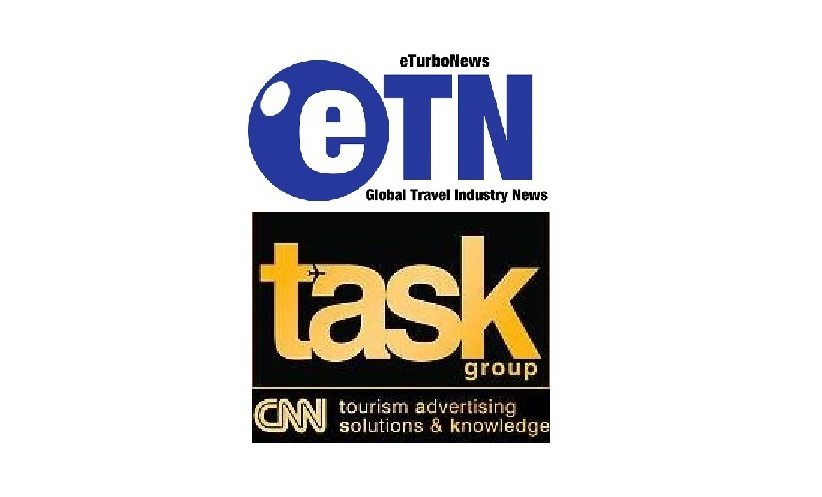
Destination competitiveness through cooperation: Embracing challenges right next door
As a very busy 2017 for global Travel & Tourism now fades into the background, tourism leaders face the daunting task of resetting the counters for 2018. Little opportunity exists for a quiet exhale following year-end tourism high periods of activity. A new year means new targets, new expectations, and new competition.
Global Travel & Tourism (T&T) saw a remarkable performance in 2017, with international arrivals crossing the 1.3 billion mark reflecting a high of +7% growth as a result of strong recovery in regions suffering instability in previous years, the UNWTO’s recent announcement of the stats has many tourism leaders across the globe feeling a level of confidence not experienced for many years where growth was a consistent +4%. The sector continues to inspire the quest for discovery of people and places, which in turn is inspiring economies and societies looking to the sector as a source of sustained unity and opportunity.
Still, the year ahead is not without its challenges. With a number of milestone initiatives set to take place in the months ahead, be they new aviation and visa facilitation policies going into effect, megaevents ranging from the Olympic & Paralympic Games and the FIFA World Cup, to royal births and royal weddings going live, and iconic attractions opening their doors, 2018 promises to be a year of immense excitement.
COMPETITIVE NEIGHBOURHOODS
The excitement will not only be felt by travelers. It will also be felt by destinations, especially those looking at activity taking place in their neighborhood.
Such is the case in the increasingly active Middle East region, where T&T continues to be integrated into national and regional strategic visions as a vehicle for sustainable economic and social development, not to mention cultural and environmental protection.
One such destination is the emirate of Ras Al Khaimah (RAK) in the UAE. With very active tourism destinations on its doorstep, namely Abu Dhabi and Dubai, RAK has found a firm position for itself in the eye of the competitive storm, much thanks to the tourism authority’s CEO since 2015, Haitham Mattar.
A hospitality professional at heart with almost three decades of front-line experience in hotel and destination management, Mattar views RAK’s competitors as a source of solid inspiration. Not an easy position to take when major events such as Abu Dhabi’s recent opening of the Louvre Museum Abu Dhabi, and Dubai’s rapidly approaching Expo 2020 can easily cause distraction from strategic decision making.
As stated by Mattar:
“Ras Al Khaimah is indeed located in a very competitive region, however, I believe that because we are a unique destination that offers nature-based adventure activities and attractions that are distinct in the UAE and the region. Everything we do is focused on how we compliment the other Emirates and add value to the UAU as a whole, particularly with our 45-minute proximity from Dubai International Airport.”
A complementary approach allows for a more steady, sensible and sustainable approach to growth. It’s all about perspective. And positioning. Mattar continues:
“Our strategy aims to bring one million tourists to Ras Al Khaimah by the end of 2018, focusing on three key tourist segments beyond the traditional leisure market seeking sun and sand. These segments are active adventurers, cultural explorers and luxury indulgence and wellness seekers. Our ongoing efforts will remain targeted on growing awareness of Ras Al Khaimah’s hidden gems both locally and internationally, focusing on its untouched and beautiful natural resources, just 45 minutes away from the modern life offering in Dubai and other Emirates.”
Clearly the aspirations of RAK’s neighbors, and investment into same, are being adopted by RAK as levers to accelerate growth. As explained by Mattar:
“Let’s take Abu Dhabi as an example. After the opening of the Louvre the Emirate reported an increase of 17.6% in its hotel occupancy. This week we’ll officially open the world’s longest zipline, Jebel Jais Flight, and it will be followed with other unique projects in the mountains including our Viewing Deck Park. We expect these products to help us deliver significant tourism growth and strengthen our position as the adventure capital of the region. Such unique mega-events that have the ability to create a bucket list effect internationally and when combined with the breadth of offer in a destination really drive appeal for the next generation of travelers.”
Taking a regionally holistic, inclusive and innately grateful approach to destination leadership allows for win:win development for both travelers and destination(s) alike.
“Ras Al Khaimah prides itself on being the outdoor adventure capital of the Middle East. Looking ahead to Expo 2020, Dubai is expecting more than 25 million visitors during the event, 70% of which will be from outside of the UAE. Given the proximity of Ras Al Khaimah to Dubai and the complimentary nature of the destination’s we hope to capitalize on this influx of tourists by focusing on the breadth of experience in our Emirate to encourage dual center visitors. We have a clear understanding on what the Ras Al Khaimah identity and unique brand stands for, and this is at the heart of everything that we do. We don’t try to compete with others, we listen carefully to what our travelers want and we work on facilitating their needs and catering to them all.”
Competition through cooperation. A winning strategy for travelers, destinations, and greater global sector development.
by Anita Mendiratta for CNN TASK GROUP
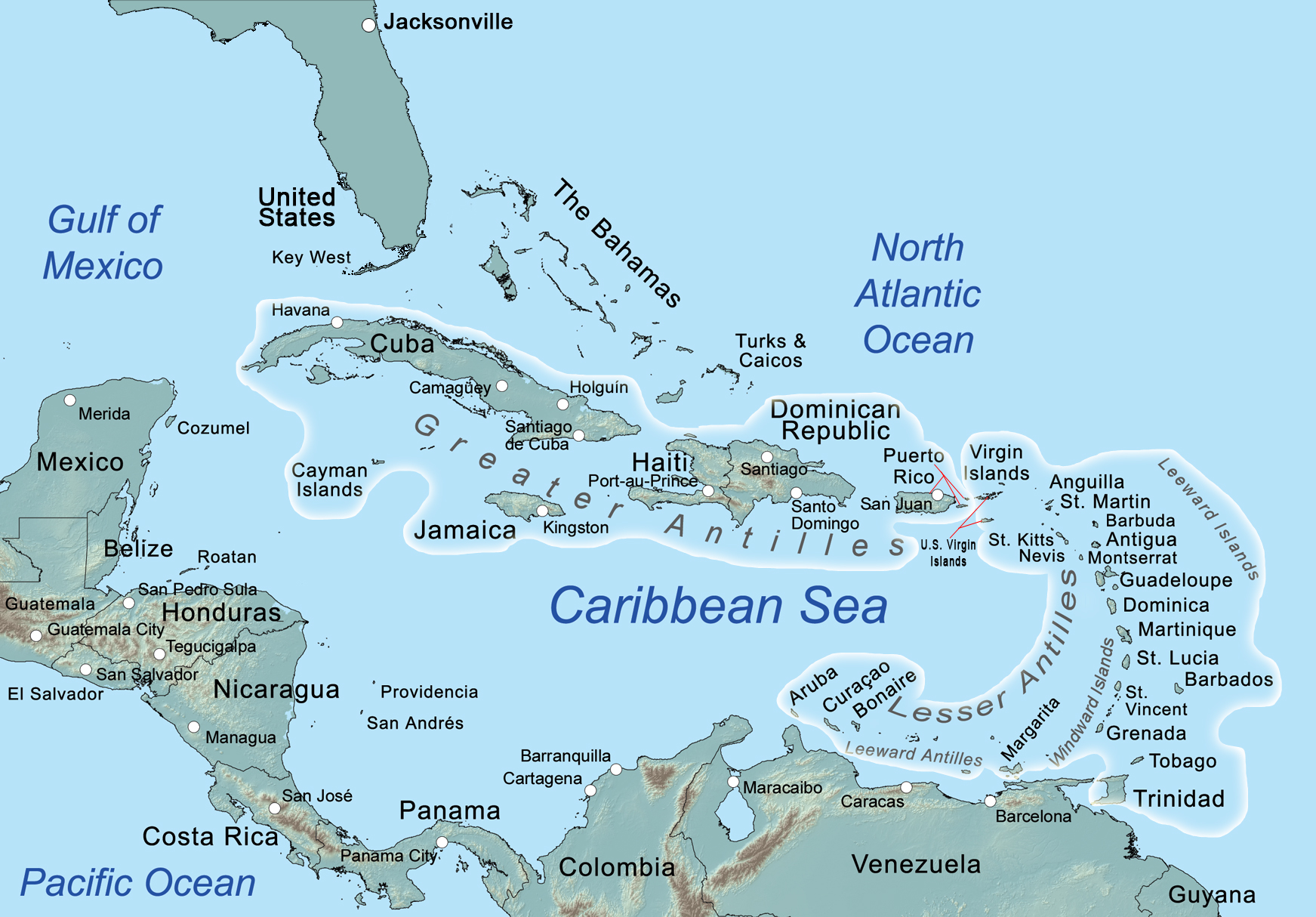
Wealth tourism development in the Caribbean
We want more private and business aircraft coming to our airport.” – “You’re right,” I responded. “We’re looking for a mover-and-shaker to do it” – “Good thing,” I replied. “We were thinking of you!” – “Who me?”. That was the essence of being invited to an airport board meeting. While driving home, it went through my mind: how on earth am I going to do this? As their PR associate, I had a good sense of the airport’s strengths and weaknesses. I had often suggested that General Aviation deserved more attention, because it’s more lucrative. Two ground staff members can handle a private jet from passenger and luggage handling to refueling. The landing and handling fees are excellent. A commercial airliner needs far more staff and attention, from ticket counter to the stairs for embarking and all the additional tra-ra around the handling of aircraft and passengers.
How did I change 60% scheduled commercial flights against 40% business aviation, into 60% bizav versus 40% scheduled, without losing business of the latter segment? Sales pitches and PR don’t do the trick. Forget 101 college marketing. I decided to visit the operation center of the business aviation operator that had the largest fleet of aircraft (140) headquartered in Portugal. In detail, they explained their operations and when airport issues popped up. If I could take care of that, would they come more often? Yes! So, I worked on it. The airport went successfully through three evaluations and it became their preferred airport in the region ‘from their perspective’.
I visited some of the major companies in Houston, Texas that handle international trip planning for business jet operators. Again, wanting to know what hurdles they face, and finding out what they knew about our airport. We learned from each other. They received a better insight of our destination ‘from their perspective’.
Why mentioning ‘from their perspective’ in both cases? Because their clients make the decision where to go, but the service providers ‘from their perspective’ will discretely advise them what may be best on how to get there. What’s my point? Solving problems is essential! Not ‘hot air’ promotion, nor sales pitches. In aviation development; there is no such a thing as opening a can of airplanes.
I should point out that the airport for which I handled the aviation development was located in Switzerland. Who followed the international news this past week, may be aware of the World Economic Forum in Davos, Switzerland. Thousands of the world’s richest and most powerful people from 70 countries were attending the event. There were more than 1,000 private jet flights over the five days.
Davos doesn’t have an airport. The closest airport is Samedan, at an elevation of 1,707 mtr/ 5,600 ft Europe’s highest airport but has no scheduled flights. It’s one of the world’s most challenging airports due to its difficult mountain topography, the winds, and the thinness of the air at this altitude. For the event, the airspace over Swiss’ Davos and the adjacent Austrian territory is virtually closed by the air forces. Exceptions are made for helicopter flights directly to Davos to bring in the ‘crème-de-la-crème’.
Where do their jets fly to? Option #1. Zurich International Airport and used by the highest ranking political officials who need extra protection and official Swiss government reception. It takes a 1 ½-hour-plus limousine ride to Davos. Option #2? ‘My’ regional airport. Only 1 ¼-hour-or-less drive because of a none saturated route. A ‘low-key’ airport and less extra policing or security needed. No air traffic slots. The ‘140-aircraft company’ decided that we’d be their preferred airport. I told the airport director that he had to move out and make his office available. The company used it for its aircraft dispatcher to handle their flights for three nearby airports including Zurich International, and in addition, two of their own customer service agents, a ground transportation coordinator, and a chief-pilot to handle crew arrangements.
What’s the point for the Caribbean? You don’t need a major airport to attract and bring in a certain clientele. You need a smooth functioning airport that is well equipped, and mediocracy is not an option. A 5,000 ft / 1,500 mtr runway is often enough.
Monaco, one of the world’s wealthiest nations, doesn’t have an airport. No space for it; just like some of the Caribbean islands. They do have plenty of funding to build it, unlike most of the Caribbean islands. They don’t even want an airport; they have a good heliport. Where do the rich-and-famous’ jets land? Nice, a major international airport that is relatively nearby. Nice is not keen on it, since it has too many scheduled commercial flights. Cannes is not far away and specializes in private and business aviation. Ground transportation to Monaco on congested roads takes too long though. Helicopter service to Monaco make sense.
Another hint for the Caribbean. You may not have roads and time-taking ground transportation, instead you have water between the territories and a ferry ride is time-taking. Helicopter service may be an alternative to accommodate this clientele. Plus, the costs of a helipad are a fraction of developing or extending a runway. Some islands don’t even have a helicopter on location. The configuration of a passenger helicopter can be changed in 10 minutes, have a hoist attached, and be ready for rescue operations.
Why would you like to have this clientele and what is the sense of this wealth tourism? They are spending ten times as much per person than the average mass-tourism visitor. US$ 900 plus for a hotel night is not uncommon, neither is a US$ 20,000 plus week’s villa rent. It is not just the positive economic impact. Since this clientele does not accept mediocracy, the island is forced to upgrade its infrastructure and facilities which may improve the overall standard of living of its community. This clientele is also willing to pay higher wages or charges for services. If they like the destination they’re loyal and return; often more than once a year. Every passenger arriving on a private jet is a potential investor in the region. Think about it. Success breeds success or…, it may at least rub off.
Author: Cdr. Bud Slabbaert, Chairman/Coordinator Caribbean Aviation Meetup
www.caribavia.com
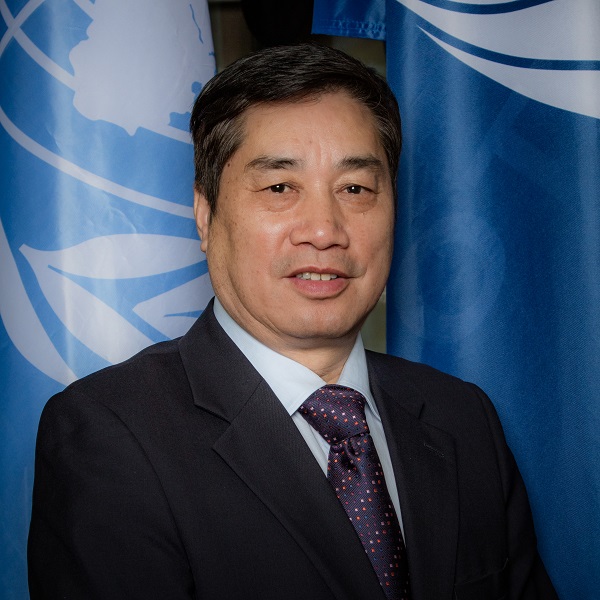
Chinese influence on World Tourism almost complete with UNWTO latest appointment
This move was expected, implemented on January 1 and announced only today, January 25. UNWTO Secretary-General Zurab Pololikashvili appointed Mr. Shanzhong Zhu as Executive Director of UNWTO. WorldTourismWire had reached out to UNWTO earlier this month to get confirmation on appointments, but no response was received.
A move for the new Georgian Secretary-General to appoint a Chinese Executive Director was expected by eTN long before the last UNWTO General Assembly. eTN had reported about a meeting with the Secretary-General and CNTA on August 28. It was assumed this possible outcome of Chinese participation in UNWTO may have been already sealed and agreed on.
The confirmation for Zurab Pololikashvili as UNWTO Secretary-General became a top priority for China when hosting the assembly in Chengdu. The importance was obvious with the launch of the World Tourism Alliance.
On September 13 during the General Assembly in Chengdu, China the World Tourism Alliance was launched under the leadership of CNTA. The founder was no other than Mr. Li Jinzao, Chairman of the China National Tourism Administration. The World Tourism Alliance is a new initiative with top name brand leadership organizations as founding members. They include brand names like Taleb Rifa, Roger Dow, CEO of the US Travel Association, WTTC and many more.
At the founding event during the UNWTO General Assembly in Chengdu, Chinese Premier Li Keqiang sent a congratulatory letter. Li Jinzao, Chairman of China National Tourism Administration (CNTA) and Director of the Preparatory Committee for the WTA, read the congratulatory letter and delivered remarks. UNWTO Secretary-General Taleb Rifai and WTA Chairman Duan Qiang also gave speeches.
Present at the ceremony included His Royal Highness Prince Sultan bin Salman bin Abdul Aziz, President of Saudi Commission for Tourism and National Heritage, Mikheil Janelidze, Deputy Prime Minister and Foreign Minister of Georgia, Joe Natuman, Vanuatu’s Deputy Prime Minister and Minister for Trade, Yin Li, Governor of Sichuan Province, Du Jiang, Vice Chairman of CNTA, and Luo Qiang, Mayor of Chengdu.
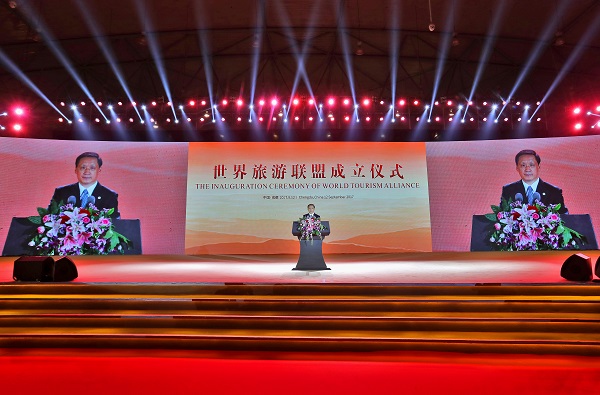
The WTA consists of 89 founding members, 29 in China and 60 from overseas countries, including 62 enterprises, 24 associations, two (2) academic institutions and one media agency. The Association and its Secretariat is currently headquartered in China’s capital, Beijing. (click here )
According to today’s UNWTO press release, Mr. Zhu, a Chinese national, began his two-year term on 1 January 2018. This was only announced on January 25. Mr. Zhu joined UNWTO in 2014 as Executive Director. Prior to his appointment, he was Vice Chairman of China National Tourism Administration (CNTA).
This position puts China clearly in the top leadership of World Tourism with decisionmaking influence on most aspects of world tourism politics. With China developing the largest outbound tourism industry in the world this ambition is not surprising.

Airlines don’t do favors: Hub-spoke airlift in the Caribbean
A hub-spoke distribution network is a system of connections arranged like a wheel in which all traffic moves along spokes connected to the hub at the center. Since we are dealing with airlift, we are obviously talking about distribution of passengers. The hub and spoke model relies on perfection. When all is working in harmony and streamlined, then the entire system can be very efficient. Passengers arrive with the larger aircraft on long haul flights at the hub. They are transferred, and take off again for their end-destinations.
The hub airport should have transit facilities and immigration waiver arrangements. That may already a one problem in the Caribbean, because often these are not available. The hub may care less; they prefer passengers who stay overnight anyway. Understandable. The airlines on their turn may react by not using that particular hub and prefer a different better and more flexible hub. Also understandable. Passengers may not like the hub and spoke system because of the transfer and the extra time it takes. Again, understandable. So, why not just flying point-to-point?
Airlines don’t do favors. They are shareholder companies that aim to make a profit and subsequently pay dividends to their shareholders. With very few exceptions, they are not publicly owned. Regardless of its ownership, in order to be profitable, they aim to fill the planes to the brim and operate as efficient as possible. Any territory dreaming of a large airplane of a major airline coming to their “Oh, island in the sun” may be dreaming. The airline perspective is very simple. Fill the plane and fly it to a hub. That airline is off the hook. From there on, passengers for various end-destinations, will transfer to smaller planes of a regional or local air operation that flies them there. That smaller flying machine may also be filled to the rim then, which will fulfill the desire of that smaller airline to be profitable and efficient.
The purpose of the hub-and-spoke system is to save airlines money, regardless whether it is a small or big operation. Aircraft are their most valuable commodity. Every flight has certain set costs (crew, cabin cleaning, ground handling, maintenance, etc.). Each passenger seat represents a portion of the total flight cost. For each seat that is filled, an airline can lower its break-even level. That is the seat price at which an airline stops losing money and begins to make a profit. What in the eyes of a tourism authority is considered an ultimate paradise, from the airline’s viewpoint it may be seen as an undesired destination, since they would have to fly their planes half empty. It doesn’t make revenue dollars and not a lick sense to make deliveries without filling aircraft to capacity.
Courier services use the hub and spoke design worldwide. All packages go through a centralized system with strategically located distribution hubs. It works almost perfect. Packages arrive overnight and or if it absolutely be on-time. Although… Recently I received a comment from the Caribbean executive of one of the major international courier services: “There are pressing issues within the Caribbean aviation sphere – for example the need for infrastructure upgrades, modernization of customs regulations, etc. and other basic and imminent needs.” So, even that segment needs some more attention in the region.
Hubbing may be ideal for packages, however, passengers are no packages, and do not wish to be treated as such. But at least we can learn from the logistics and the punctuality of the system.
One would hope that despite the complexities and inconveniences of hub and spoke airline operations, flying would be more readily available at affordable prices in the Caribbean. The inter-island air traffic in the region has a distinct problem. Flying from one island to another that is only 1-2 our flying distance away, may take up to 11 hours with 1 or 2 stopovers. The fare may cost US$ 1,000 plus. Ridiculous? No, it may not be the rule, but it is no exception and it is no exaggeration either. Flight schedules and frequencies are part of that problem.
Many small territories try to hold on to what they believe to be their exclusive rights. It’s like wearing an exclusive fancy necktie but suffocating oneself with it. The governments don’t have much to hold on to anyway, so they try to hold on to whatever they’ve got. It fits in their category of ‘protection’. Therefore, they implement restrictions. Those could be landing rights. Levying passenger taxes is not a restriction, yet, it is an exclusive right and it is a repellent. Yet, Tourism Ministries and their agencies are virtually screaming and yelling like merchants on a fish market to get airlines to come. And if airlines don’t come, those are perfect scapegoats to put the blame on.
It would be a good idea to work on a “Open Skies” or at least on a “Friendly Skies” concept for the region. Does ‘deregulation’ ring a bell? One word describes best what the biggest hurdle for progress is: ‘clinging’. Without restrictions on route entry, some airlines could be able to enter markets previously closed to them. It could bring more passengers. It could stimulate inter-island activity and commerce. Lowering, or preferably eliminating passenger taxes, can lower airfares and attract more passengers. Mind that every tourist has a vacation budget limit! But what the heck? As a humble column writer without a hidden agenda, nor having a commercial interest, one tries to provide ‘food for thought’. When pointing out that there is an opportunity, it’s seldom acted upon. When there is none, one is often expected to come up with witchcraft.
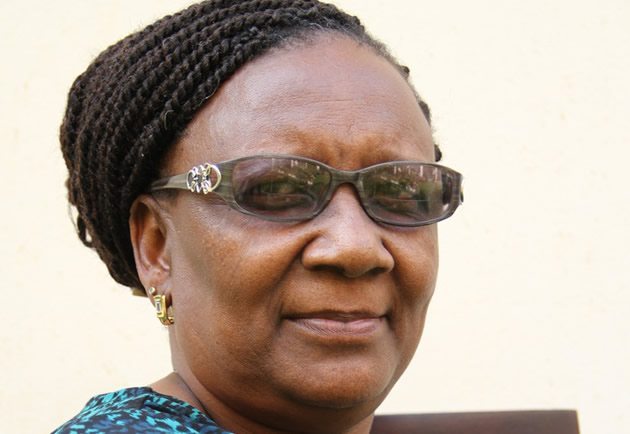
Sour relations? UNWTO, the new Zimbabwe tourism minister or Walter Mzembi
Zimbabwe and the United Nations World Tourism Organisation (UNWTO) relations are set for major improvement with the global body pledging to host another high profile event in the country in 2019, the Zimbabwe Broadcast Corporation (ZBC) said in a report published Sunday.
It’s hard to understand what “major improvements” the ZBC is referring to. It very much looks UNWTO and the new Secretary General, Zurab Pololikashvil, is getting involved in a domestic issue in Zimbabwe without realizing it.
This issue might even cost former Zimbabwe’s tourism minister, Walter Mzembi’ freedom. The former minister is currently awaiting trial in Harare for obviously political reasons after the recent military intervention in Zimbabwe. It didn’t appear there were any sour relations between Zurab Pololikashvil and Walter Mzembi. The new Zimbabwe leadership should keep its domestic issues away from UNWTO and the international fora.
If it wasn’t for a man with an idea, an ambition and a tourism minister with a qualification and a vision hardly anyone in the travel and tourism industry had, the best ever attended UNWTO General assembly with 120 voting countries would not have happened. This event was the UNWTO General Assembly was held in 2013 in Livingston, Zambia and Victoria Falls, Zimbabwe. The man was the Honorable Minister of Tourism for the Republic of Zimbabwe, Dr. Walter Mzembi form 2009 to 2017.
“There are no sour relations between the UNWTO and Zimbabwe,” contends Mzembi, who in his acceptance speech in China promised to be the first to congratulate Pololikashvil. Mzembi actually was the first congratulating and the picture speaks for the rest.

The reason Zimbabwe should keep its domestic issues away from UNWTO and the international fora may be the global event Zimbabwe discussed with UNWTO during the latest FITUR travel trade show. This is important if Zimbabwe is going to achieve the brand and reputation it is seeking to establish. There are no sour relations between Pololikashvil and Mzembi.
Dr. Taleb Rifai, celebrated recently as the most respected Secretary General of the UNWTO started his second term at the General Assembly in Zimbabwe and Zambia.
Taleb Rifai said this in 2013, “Having two hosts can be quite challenging but the corporation between the two countries has been remarkable and has seen the successful hosting of the event .”
Dr. Rifai praised the Zimbabwe minister in 2013, and he praised him many times again over the years and again recently in 2017 at a gala dinner event hosted in the Ethiopian capital Addis Ababa. Dr. Taleb Rifai praised the youthful Zimbabwean tourism minister Walter Mzembi, applauding his professionalism as well as the conduct and focus.
Going further, Dr. Rifai applauded the Minister for the outstanding contribution he had made, by way of his diplomatic outreach program, towards enhancing the image and overall country brand of his native Zimbabwe. He told Mzembi: “For me, you are already a winner….you have already won.”
ICTP Chairman Juergen Steinmetz, who is also the publisher of this Worldtourism newswire had many conversations with Mzembi over the last 6 years. Steinmetz last year suggested to Mzembi: “You are the most consistent, educated and proactive tourism minister I ever met, you do miracles for your country you love, but unfortunately you serve the wrong president. You constantly work against all odds and the major part of the world is not behind your country, even though they may want to be behind you.” Mzembi privately never disputed this but worked tirelessly to make tourism better.
In an eTN interview in 2013 Taleb Rifai actually had a great feedback when asked by eTN Nelson Alcantara: “You can find things to say about political systems around the world, but at the end of the day, where do we draw the line? We have an obligation to serve people wherever they are, under whichever political system that they are living under. I am happy about the General Assembly in Victoria Falls because of a young woman that works in a hotel in Zimbabwe or a young man who is a receptionist in Zambia. They are the ones who need to see that the world is with them; they are the ones that are yearning to see the international community come and be with them.”
When Mzembi was asked about this, he very much appreciated Rifai’s comment without wanting to go on the record.
Currently, Mzembi is facing a criminal trial in Harare. His next hearing is scheduled February 27, 2018.
Here is why: When he was a minister of tourism he donated four big screen TV sets to churches in order to increase religious tourism to Zimbabwe. Even though he had no personal monetary advantage doing this, the new Zimbabwe government wants to send Mzembi to prison for misuse of power.
In a 2013 report, the Financial Gazette said: “Walter Mzembi, the Zimbabwe Minister of Tourism and Hospitality Industry, said movements of religious people constitutes tourism since the majority of them spend days and nights away from their normal homes.”
“This is a reality that as leaders we cannot afford to ignore. This is a reality we must not only recognize but which we must find ways of addressing so that our people’s religiosity is leveraged for the best interests of our nation,” Mzembi said in 2013, continuing “Religion promotes peace and harmony with spiritual well-being considered as an integral part of people’s way of life.”
A year later thousands of Jehovah’s Witness parishioners have descended on Harare, snapping up all available hotel accommodation and spending millions of dollars as government’s religious tourism push pays off. Walter Mzembi, the minister of Tourism and Hospitality Industry, told the Daily News.
Perhaps it’s time for Zimbabwe’s new progressive leadership to learn from the past, but honor those that did well in the past. Keeping the Zimbabwe image up during impossible times is an achievement on its own. It would be a good move for the new Zimbabwe leadership to use the experience and wisdom of people like Mzembi for a better future of Zimbabwe. Dr. Mzembi knows this and just two days ago offered his support for Zimbabwe’s new leadership and announced an open pledge of alliance to Zimbabwe under their new President Emmerson Mnangagwa.
Last year, when Mzembi was in competition with Zurab Pololikashvil to become the next UNWTO Secretary-General, could it mean a personal relationship could turn “sour” during such a process? Of course, it could.
BUT, does it mean at any time the relationship between UNWTO and Zimbabwe turned sour? Does it mean a relationship would remain sour between political pros after an election result? This would be hard to comprehend unless the UNWTO is only Mr.Pololikashvili, and Zimbabwe is only Dr.Walter Mzembi.
The recently appointed minister for Tourism and Hospitality for Zimbabwe last week attended FITUR in Madrid. Her name is Her Excellency Cde Priscah Mupfumira. She said the country is pleased with the improved relations with the global body (UNWTO) and expressed gratitude for the opportunity to host another major event. When she was appointed she had told a local newspaper: “Tourism is a key contributor to the economy. So for me, the first thing is about brand Zimbabwe, marketing the brand, making sure that we attract as many tourists as possible and grow the sector’s contribution to Government revenue.”
The new UNWTO Secretary-General Zurab Pololikashvili last week said in Madrid he was passionate about assisting the Southern African country to grow its tourism industry.
Zimbabwe Tourism Authority chief executive Mr. Karikoga Kaseke said last week, he was excited about the support being extended to the country, adding that the authority was hopeful the event to be hosted in 2019 will be another UNWTO General Assembly.
Riding on the goodwill being shown to the country at the ongoing 2018 FITUR, Zimbabwe is looking forward to taking advantage of the”renewed confidence for Zimbabwe to reposition itself as a safe and attractive tourism destination.
Minister Priscah Mupfumira opposes Mzembi domestically. According to Mzembi, UNWTO Secretary-General Zurab Pololikashvil called Mzembi recently to voice his support for Mzembi’s difficult personal struggle, the former minister is currently going through. This call clearly shows there was no “sour” relations between the two men.
It can only be hoped Mr. Polokikashvil understands how to balance this difficult situation and maneuver it to a good way forward for UNWTO’s relationship with Zimbabwe, the new minister of tourism for Zimbabwe Priscah Mupfumira and the respect UNWTO owes to Dr. Walter Mzembi.
The world is watching and when” one of us” is under attack so is the rest of us. The UNWTO embracement of the code of ethics includes how we also treat each other in such circumstances.

Travel in Africa Up Close: Enormous opportunities for tourism but leadership?
It takes 17+ hours to fly the 7960 miles from to Johannesburg, South Africa from New York City. When the trip is made in coach class this is a decision that is not made casually. Under the best of circumstances, economy-level flying is challenging. When the time spent in a teeny tiny seat for almost a complete day, the opportunities for being uncomfortable expand geometrically.
Just looking at the coach class section of South African Airlines SAA (even without people), can trigger a panic attack. When filled with passengers and babies, personnel and food carts, the scene makes New Year’s Eve in Times Square look empty and quiet.
The good news for my outward bound trip was that the SAA flight was not completely sold out and I was able to expand across two seats and not feel like I was a body being compressed into a suitcase.
The bad news is that the remaining seats in the row were occupied by a man of giant proportions who thought that the entire row belonged to him, seizing the opportunity to occupy every seat in the aisle. Fortunately, I was able to reclaim my cherished space when I enlisted the aid of an airline staffer.
What to Know
Beyond the challenge of airline seating, travel throughout the African continent is not easy. Although the Mission of the African Union (55 African countries) is to promote a peaceful, prosperous and integrated Africa, little has been done to develop a strategic plan to implement the concept. Although the African Aspirations program for 2063 includes objectives for growth and sustainable development, political integration, and the support of Pan Africanism with a strong cultural identity and common heritage, progress is very slow.
It is not news that the growth of trade and tourism requires an efficient and effective infrastructure between countries. Unfortunately adequate land and sea connections (including roads, rails, and maritime) are currently unavailable. In some countries (i.e., Zimbabwe, South Africa), a few of the airports are starting to meet a demand for connectivity – but the modernization of all facilities is very slow.
It is also not news that border controls are chaotic, appear to be run by under-trained personnel who take their power of yes and no very seriously and frequently use their position to intimidate people seeking to travel from one country to another.
Visa costs vary from one country to another, with payments paid by a Canadian different from charges to an American. There appears to be little consistency in fee payment schedules, one country asks for a fee to enter while others want fees to enter and leave the country. Fee assessment(s) seem to be dependent upon the whims of the employees and not a set of established and fixed government-negotiated guidelines.
Another variable is the occupation of the visitor. People traveling on business or for leisure are treated differently and their visa fees suggest creativity rather than bureaucracy. Research through USA-based embassies and consulates prior to departure do not provide significantly accurate information, when/if guidelines are available at all.
Brand Africa
The exotic image of Africa is marred by poverty, strife, hunger, war, starvation, disease, and crime and a complex and disturbing infrastructure challenges travelers. Because perception is a reality the region self-limits many potential markets from visiting. While the public and private sectors should be working together to reconcile reality and perception with information that is current and accurate – an apparent acceptance of conditions (an ennui) is noted and accepted in both governmental and private sectors.
Looking for Leadership
Governments offer lip service regarding the importance of tourism development as an important economic engine. Speeches are written by African leaders calling for the national development of tourism as a mechanism to alleviate poverty, generate foreign revenue, and contribute to wildlife conservation; however, these leaders are not providing the resources necessary to develop a viable industry, leaving the growth entirely in the hands of private developers.
Currently, tourism revenues are generated through a narrow line of products such as wildlife and national parks based on a few species (i.e., the big five and the mountain gorillas). Leisure tourists are responsible for approximately 36 percent of the market and business travelers are responsible for 25 percent of international arrivals with 20 percent attributed to visiting friends and relatives. Other tourism categories include sports tourism, visits for medical treatments and attendance at meetings and conventions.
Leisure tourists with large budgets frequent Kenya, Seychelles, South Africa and Tanzania, while niche tourists participate in overland or cross-continental trips and adventures, cultural heritage, diving and bird watching tours. Lower-end tourists are likely to holiday in The Gambia, Kenya, and Senegal. Middle-income segments are missed because of marketing-errors – travelers perceive the cost of a tour to Sub-Saharan Africa as expensive in relation to its value.
To overcome the challenges facing the development and/or expansion of tourism executives will be forced to create an environment of political stability, enlightened governance, infrastructure development, consistent service standards, food /water safety, and personal security – all supported by an adequate budget and pro-active marketing and public relations programs.
Size Matters
The Tourism budgets for some African countries are very small. For example, Zimbabwe, with a National annual budget (2016) of $4.1 billion, allocated only $500,000 to tourism.
Very few countries are able to support tourism products without additional private sector resources. Kenya and Tanzania charge $40-$75 per day per person for park fees. The Rwanda Wildlife Authority charges visitors up to $750 per half day to track gorillas. Kenyans participate in tiered pricing systems with citizens and residents paying lower fees than foreign and international visitors.
Unfortunately, these fees are seldom sufficient to finance the multiple sustainability needs of parks, protected areas, and surrounding communities. Governments continuously search for add-on fees from minimally invasive businesses, and offer opportunities for tourists to contribute to the maintenance of the parks – but revenues generated are insufficient to cover costs.
Tourism Requires Planning
While South Africa is a popular hub, the nearby countries of Botswana, Zimbabwe, and Zambia offer interesting opportunities for unique travel experiences; hence, the first question is “Where do you want to go?”
Unless you have lived in Africa and/or know people who have lived or worked in this region, it is very difficult to determine where to go and how to get there. Unlike travel through the USA, Europe, Asia, the Caribbean and Mexico, it is not easy (and not recommended) to attempt a holiday in Africa without advance planning.
Tourism is recognized by the governments of the SADC countries as offering major opportunities for economic growth; however, Robert Cleverdon’s research (2001) finds that they have “allocated few developmental funds” to this endeavor. The SADC Coordinating Unit (tourism protocol) and Regional Tourism Organization of Southern Africa (RETOSA) (regional tourism marketing organization with a public-private sector marketing focus) have been formed and some countries have developed a dedicated Ministry of Tourism. A few other nations have implemented joint public-private sector tourism boards or councils; however, these institutions do not have the “technically qualified or experienced officials needed to guide, manage and monitor the development of a diverse sector like tourism,” and Cleverdon calls for the development of ongoing education and training programs that will develop groups of tourism professionals in each country. He also suggests that the countries “of the region… address the present failure to translate plan preparation into implementation” (Cleverdon, 2002).
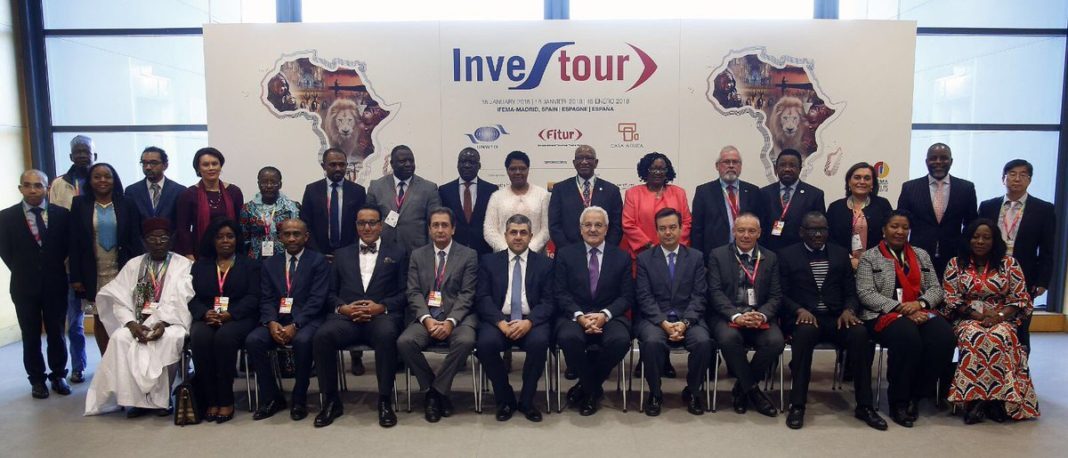
Brand Africa and biodiversity focus of INVESTOUR in Madrid
Nearly 30 African Tourism ministers convened at INVESTOUR to debate and exchange experiences on the development of the sector in the continent. This unique Tourism Investment and Business Forum for Africa is jointly organized by the World Tourism Organization (UNWTO), Casa Africa and FITUR.
Two round tables and a business-to-business component integrates the 9th edition of INVESTOUR that took place in the framework of FITUR, the Tourism Fair in Madrid. The first session, moderated by Thebe Ikalafeng, Chairman at Brand Africa, addressed branding strategies to position the African continent in the travel market.
“International tourist arrivals in Africa grew by around 8% for the second consecutive year with 62 million arrivals registered for 2017. These strong results that show the potential of tourism in Africa but also the prioritization of the sector in the development agenda in the continent,” said UNWTO Secretary General Zurab Pololikashvili.
“INVESTOUR has become a consolidated platform for sharing ideas and projects around the tourism sector in Africa. We started as a small summit and nine years later, nearly 30 African tourism ministers convene here to position the African continent, a topic that will occupy the debates in this year’s edition,” explained Luis Padrón, Director General of Casa Africa.
The second panel evaluated the added value of African biodiversity as a strong component of the tourism sector in the continent. Wildlife, reserves and geographic treasures make Africa unique with regard to its tourism offer. According to UNWTO research, wildlife watching travel represents 80% of the total annual tourist arrivals to Africa. However, it is mandatory to continue working on conservation and protection measures and to engage stakeholders of different nature such as governments, local communities, private sector recipients and the media.
Within that round table, the UNWTO/Chimelong Programme on Wildlife Conservation and Tourism was presented. The initiative, jointly implemented by UNWTO and the Chimelong Group, based in Guandong (China), aims at contributing to the Sustainable Development Goals and the 2030 Agenda through sustainable tourism and particularly wildlife conservation. The initiative comprises capacity building, advocacy and knowledge sharing methodologies and addresses multiple stakeholders such as governments, civil society and the media.
In the afternoon, tourism stakeholders gathered to discuss business opportunities in the continent. 15 inspiring projects were shared with the aim to build partnerships around tourism development in African nations.
Speaking to the press at that Investour 2018, Elsia Grandcourt, Head of the Africa Commission at the UNWTO said:- “One of the greatest challenges we face, together, is how the world views Africa. We are all aware of the negative stereotypes and perceptions that our continent sadly is much too often referred to”.
Elsia Grandcourt went on to say that there are many forces of influence that work against Africa and together we often blame the media for reinforcing a negative narrative. “The fact remains, however, that we must work towards redefining and shifting the narrative. We must tell our story, as individual African nations, and as one Africa. This is one of the priorities for the Commission for Africa”. Elsia Grandcourt, the Head of the Africa Commission at the UNWTO said.

Impact Travel: Measured – Green – 2050 proof
“Coming out of the World Tourism Organization’s (UNWTO) Sustainability Committee this week, I was struck by how far we’ve advanced in the past 25 years, in putting the idea of green travel into the mainstream of our sector. And at the same time, how far we still have to go.”
These are the words by Professor Geoffrey Lipman , Director of SUNx – Strong Universal Network – a program of the EU based, not for profit Green Growth and Travelism Institute, and a legacy to the late Maurice Strong – Sustainable Development Pioneer. SUNx goal is to promote Climate Resilient, Impact-Travel through a global cloud-connected network of Learning, Innovation and Resilience Centres. He is also President ICTP, International Coalition of Tourism Partners.
Professor Lipman continues: “It’s been a privilege to be a part of that journey, in the private, public and NGO camps, and most recently as co-founder of SUNx (Strong Universal Network) – a Climate Resilience initiative for my friend, and global sustainability champion, the late Maurice Strong. SUNx is an advocate for “Impact-Travel” measured to manage: green to grow: 2050-proof to transform.
In the past quarter-century, since the 1992 Rio Earth Summit, our sector evolved from a simple niche concept of eco-tourism to the 2017 UN Year of Sustainable Tourism, with over a thousand events, across the globe, covering virtually every type of travel and tourism product, as well as engaging visitors and visited.
On the way, there has also emerged a myriad of certification schemes, green conferences galore, mushrooming observatories for analytics and a plethora of awards to motivate companies, destinations, and travelers. CSR has jumped from periphery to mainstream.
We have hundreds of names and definitions to describe a wide range of green-hued products – eco, responsible, geo, adventure, pro-poor, fair trade, and conscious for example. Many operate at the destination level, some regional, others global.
And we have a massively expanding series of initiatives to measure tourism’s impacts – dashboards, indices, reports, roadmaps, satellite accounts and simulations, inside the sector. Outside, we have the 2030 focused measurement frameworks of 17 SDG’s, 169 targets and 304 indicators, with their national initiatives and local application. And the overriding 2050 demands of the Paris Climate Agreement, with its below 2 degrees eXistential targets.
Yet it seems to me we are making excellent tactical initiatives – big tactical initiatives, but what we don’t have, is a coherent “systems approach to sustainability”. that helps move these disparate approaches down a positive change pathway.
A pathway that is not only relevant to our sector but links to all of the other closely intertwined socio-economic sectors. That is “glocal”, with global principles applied locally. That works in smart cities, rural communities, national parks and small islands. And that encompasses the big indicators of the SDG, dealing with planetary life, and the Paris Climate Targets dealing with our very survival as a species.
And this is where the concept of Impact-Travel has a role to play. The term was coined by Professor Klaus Schwab, Founder of the World Economic Forum, to describe, on one hand, the immense socio-economic benefits of human mobility, and on the other the serious, unintended environmental consequences. It was also cast in the context of the Forum’s vision of a disruptive 4th Industrial Revolution, where the travel and tourism sector – transport, hospitality, services and infrastructure – will have big, new challenges & opportunities.
This idea was then framed by SUNx as a template, with 3 basic characteristics, that easily distinguish any sustainable tourism approach:-
Measure to Manage – good and bad impacts analysed and proactively dealt with together. There can be no universal measuring system – regions, countries and communities have differing needs and approaches, as do sectors and sub sectors, companies, travellers and residents. Some will be big data and sensor based; some will be global and top down: some will be micro and bottom up. The key criteria will be that measurement must be transparent, continuous and ultimately recorded.
Green to Grow – low carbon, renewable energy, social inclusion, technologically savvy and nature based. We are not talking just about sector standards, there are global socio-economic and geo-political factors to reflect. There are also planetary boundaries.
2050-proof to Transform – with the Sustainable Development Goals as a medium term objective, the 4th Industrial revolution as a new frontier of challenges and opportunities and the Paris Climate targets as a hard backstop.
All of these should be reflected in any truly sustainable travel product and service.
Going forward, like other sectors, we will particularly have to address our impacts in terms of carbon (transport – particularly, fossil fuel dependent, aviation, and buildings), social inclusion, resource utilisation (water, food, and waste), biodiversity depletion and “people congestion” – so called Overtourism.
There are too many dynamics in a rapidly evolving global marketplace, to rationally contemplate a magic bullet, “one size fits all”, sustainability solution. There are many excellent schemes in play and there will be many more based on technology and innovation. What we will still need however is a road to travel together, where all the many contributing approaches can advance on their own terms, and at their own development pace.
At SUNx, we believe Impact-Travel can be a helpful roadmap for that journey, and will collaborate inside and outside the sector, to keep the focus on the general sustainability concept, and on the overriding climate resilience imperative.”

EXPOTURAL is introduced to the tourism industry at FITUR
The Community of Madrid stand will bring the main players in the sector together to find out what the only Spanish trade fair with a commitment to sustainability, the climate and nature has to offer
The Nature, Climate and Sustainable Tourism Fair presents its main courses of action in the area of corporate social responsibility
Madrid.- 18 January 2018.- EXPOTURAL, the Nature, Climate and Sustainable Tourism Fair, was introduced to the main players in the tourism sector at the Community of Madrid stand at FITUR. Carlos González, Sales Director of IFEMA; Stephan Labarrieri, CEO of Abeo; José Manuel Vilanova, promoter of Expotural, and Alfonso Polvorinos, Technical Director of Expotural, explained the key aspects of this event, which has returned to Madrid reinvigorated, with a clear international ambition and a programme of events and content that make it the biggest forum in terms of experience and knowledge about the environment.
The fair, which is organised by IFEMA, will be held from 1 to 4 November 2018. It will present its main courses of action in the area of corporate social responsibility, as it is the only fair in Spain that is firmly committed to sustainability, climate and nature in three ways:
– By making a direct financial contribution to a reforestation project (directly benefiting biodiversity conservation and indirectly benefiting the climate), which will come from a percentage of the entry fee.
– By contributing to fighting climate change and promoting sustainability. The aim is to be a carbon-neutral fair by offsetting the carbon generated during the fair through carbon offsets or credits (Kyoto Protocol CERs)
– By taking part in the 2018 events of the international association “Respect The Mountains”, an international project of the UIAA (International Climbing and Mountaineering Federation), which will take place all over the world throughout the year. The UIAA will include Expotural among its 2018 events.
In the first edition of this new era, EXPOTURAL, which will be held on 1-4 November 2018, will feature more than 10,000 square metres of exhibition space dedicated to rural, nature and adventure tourism, and a richly varied national and international selection of mountain destinations around the world.
The new project will therefore include a broad cross-section of mountain sports, natural spaces, protected national parks, ornithological tourism, climbing as a new Olympic sport and adventure sports, segments that will also be extensively developed in the programme of lectures that will accompany the professional and commercial activity of EXPOTURAL.
The major milestones of this edition include, firstly, the organisation, for the first time at a trade fair, of the final stage of the Spanish Lead Climbing Cup, arranged by Entre-Prises and ABEO, for which a large xxx-metre-high rockodrome, representing Mount Everest, will tower over the centre of the fair.
Secondly, in the area of information and knowledge, for the first time in Spain, the 1st Congress on Ornithological Tourism will be held, a meeting underpinned by Spain’s having 10 natural spaces for birding, with almost 600 SPAs and 450 nomadic and migratory species, in addition to the first Madrid Conference on Sustainable Tourism and Climate Change.
There will be a series of one-day events that will also address active tourism and adventure sports, involving companies dedicated to rafting, trekking, hiking and other activities related to active tourism and nature-based tourism.
These events will also feature companies, entities and participating institutions, so they can present their own projects and experiences based around two major thematic areas: “National Parks and Protected Natural Areas”, a key element in a country like Spain that has the largest natural protected area inthe European Union, and “Mountains and their Ecosystems”, which will act as the focal points of the fair.
A final theme will be rural gastronomy as an important distinguishing feature of rural tourism, with talks on the Mediterranean diet and the main types of rural gastronomy from the different autonomous communities that will have a presence at the fair.
This intense and attractive programme is open to the citizens of Madrid who are interested in learning about and enjoying nature and mountain tourism – always with the common denominator of the impact of climate change and from the perspective of responsibility for the protection of the environment.
In Spain today, tourism is one of the economic sectors with the most relevance and weight in GDP and job creation. Caring for the natural surroundings is therefore a very important factor of the tourism products on offer in this country, as any change in the conditions of these spaces could have a very significant impact on the future of nature tourism.
